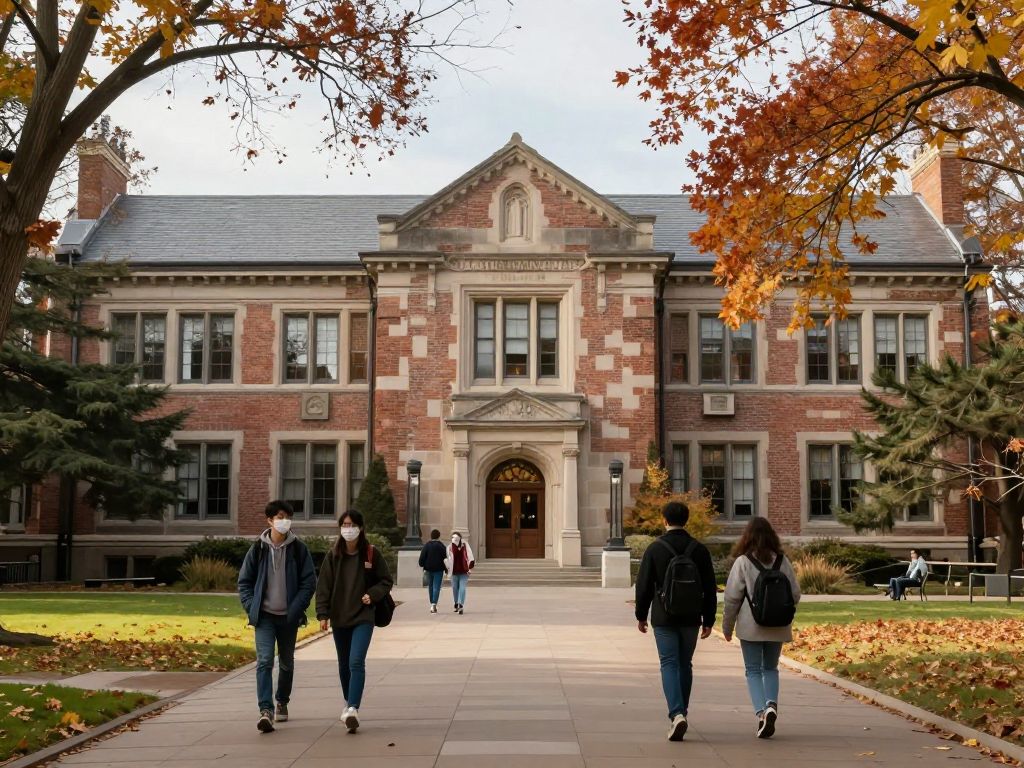Boston, September 20, 2025
News Summary
The Boston Planning & Development Agency (BPDA) board has approved a significant overhaul of zoning regulations designed to promote residential development in the city’s commercial core. This plan permits building heights of up to 700 feet near the Financial District and repurposes underused office space for housing, emphasizing the inclusion of affordable units. While city officials support the changes to revitalize downtown and address housing density, critics express concerns over potential loss of sunlight in parks and the character of the city.
Boston — The Boston Planning & Development Agency (BPDA) board approved an overhaul of zoning regulations on Thursday aimed at promoting residential development in the city’s commercial core, advancing a plan that allows building heights to increase up to 700 feet near the Financial District and that seeks to repurpose underused office space for housing.
Key decisions and immediate outcomes
The BPDA board voted 4-1 in favor of the new zoning plan, with member Ted Landsmark opposing it due to the need for more public input. The board also unanimously decided to forward the plan to the Zoning Commission for further consideration, with a meeting scheduled for October 22. The new zoning regulations have been in development for over six years.
The new rules set a range of building height limits, increasing from 100 feet to 700 feet as buildings approach the Financial District. Zones will allow a maximum height of 155 feet along Washington Street, the Ladder Blocks, near the Old South Meeting House, and at Park Plaza. The regulations preserve state shadow protections for the Boston Common and Public Garden.
Affordable housing and Planned Development Areas
Residential projects under the new rules must include 20% affordable units, with at least 3% allocated for Section 8 rentals. The zoning changes include provisions for Planned Development Areas (PDAs), which allow for larger developments under specific conditions, such as preserving historic buildings and residential dominance, but adhere to state shadow laws.
Supporters, critics and community response
Supporters argue that the revised zoning is crucial for revitalizing a downtown area struggling with reduced foot traffic and unutilized office space following the pandemic. Mayor Michelle Wu and Planning Department Chief Kairos Shen emphasized the need for the area to adapt to preserve its character and function. City Councilor Sharon Durkan stated that increased height limits could foster a thriving, equitable downtown and provide more affordable housing.
Critics fear the changes may result in taller buildings and reduced sunlight in parks, likening Boston’s future to Manhattan. State Rep. Jay Livingstone voiced concerns from residents and organizations such as the Freedom Trail Foundation and Friends of the Public Garden, arguing the proposal threatens the Boston Common and Public Garden. The community coalition pushing against the plan requested more time to address public concerns and suggested modifications to limit building heights further in historically sensitive areas.
New zoning districts and design safeguards
The proposed changes will create two new zoning districts: SKY and SKY-LOW-D, with the latter focused on preserving existing structures and neighborhood scales. PDAs will be available for larger projects that meet set conditions, including historic preservation and residential orientation, and must continue to follow state protections that limit shadows over public parks.
Why the changes were proposed
The zoning proposal is seen as a response to Boston’s existing housing crisis, with a focus on increasing housing density downtown to convert underused office buildings into residential units. Planners and city leaders framed the changes as a way to bring more residents and daily activity back to the central business district while balancing historic preservation and park protections.
Next steps
- The BPDA plan will be reviewed by the Zoning Commission at a meeting scheduled for October 22.
- If the Zoning Commission approves the plan, additional approvals and project-level reviews will follow for specific developments, including PDA proposals that must meet required conditions.
- Community groups and coalitions may continue to seek modifications or limits on height in historically sensitive sites before final approvals.
FAQ
What did the BPDA board approve?
The Boston Planning & Development Agency (BPDA) board approved an overhaul of zoning regulations on Thursday aimed at promoting residential development in the city’s commercial core.
How long were the new zoning regulations in development?
The new zoning regulations have been in development for over six years.
What building heights do the new rules allow?
The new rules set a range of building height limits, increasing from 100 feet to 700 feet as buildings approach the Financial District.
Where are the 155-foot height limits applied?
Zones will allow a maximum height of 155 feet along Washington Street, the Ladder Blocks, near the Old South Meeting House, and at Park Plaza.
Do the regulations affect the Common and Public Garden?
The regulations preserve state shadow protections for the Boston Common and Public Garden.
What are the affordability requirements for residential projects?
Residential projects must include 20% affordable units, with at least 3% allocated for Section 8 rentals.
How did the BPDA board vote?
The BPDA board voted 4-1 in favor of the new zoning plan, with member Ted Landsmark opposing it due to the need for more public input.
Where does the plan go next?
The BPDA board unanimously decided to forward the plan to the Zoning Commission for further consideration, with a meeting scheduled for October 22.
What broader problem is the zoning proposal addressing?
The zoning proposal is seen as a response to Boston’s existing housing crisis, with a focus on increasing housing density.
What are PDAs in the new zoning changes?
The zoning changes include provisions for Planned Development Areas (PDAs), which allow for larger developments under specific conditions, such as preserving historic buildings and residential dominance, but adhere to state shadow laws.
What new zoning districts will be created?
The proposed changes will create two new zoning districts: SKY and SKY-LOW-D, with the latter focused on preserving existing structures and neighborhood scales.
What do supporters say?
Supporters argue that the revised zoning is crucial for revitalizing a downtown area struggling with reduced foot traffic and unutilized office space following the pandemic.
What do critics say?
Critics fear the changes may result in taller buildings and reduced sunlight in parks, likening Boston’s future to Manhattan.
What did city leaders and elected officials state?
Mayor Michelle Wu and Planning Department Chief Kairos Shen emphasized the need for the area to adapt to preserve its character and function.
What did City Councilor Sharon Durkan state?
City Councilor Sharon Durkan stated that increased height limits could foster a thriving, equitable downtown and provide more affordable housing.
What concerns did State Rep. Jay Livingstone raise?
State Rep. Jay Livingstone voiced concerns from residents and organizations such as the Freedom Trail Foundation and Friends of the Public Garden, arguing the proposal threatens the Boston Common and Public Garden.
What did the community coalition request?
The community coalition pushing against the plan requested more time to address public concerns and suggested modifications to limit building heights further in historically sensitive areas.
Quick reference table
| Item | Detail |
|---|---|
| Approving body | Boston Planning & Development Agency (BPDA) board |
| Board vote | 4-1 in favor; one opposing vote by Ted Landsmark |
| Next review | Zoning Commission meeting scheduled for October 22 |
| Height limits | Range from 100 feet to 700 feet; 155 feet max in specified zones |
| Protected areas | State shadow protections for the Boston Common and Public Garden preserved |
| Affordable housing requirement | 20% affordable units; at least 3% for Section 8 rentals |
| New zoning districts | SKY and SKY-LOW-D |
| PDAs | Allowed with conditions including historic preservation and residential dominance |
Deeper Dive: News & Info About This Topic
HERE Resources
Governor Proposes Faster Environmental Reviews to Speed Housing Construction
Massachusetts Voters May Decide on Rent Control Measure
Historic Ebenezer Hancock House in Boston Hits the Market
Massachusetts Governor Proposes Housing Construction Reforms
Michelle Wu Seeks Reelection in 2025 Boston Mayoral Race
Boston’s September 1 Moving Day Causes Urban Congestion
Cities Develop AI Guidelines for Public Employees
Boston Chamber CEO Opposes Rent Control Proposal
Boston’s September 1 Moving Day Chaos Unfolds
Boston’s Housing Crisis Deepens Amid Mayoral Race
Additional Resources
- Boston.com: Zoning to Allow Taller Towers in Downtown Boston Approved by BPDA
- NBC Boston: Boston Skyscraper Zoning Proposal Divides Leaders
- Boston Herald: BPDA Board OKs Mayor Wu’s Downtown Boston Skyscraper Plans Over Objections
- MassLive: Downtown Boston Zoning Changes Could Allow Buildings Up to 700 Feet Tall
- Wikipedia: Boston

Author: STAFF HERE BOSTON WRITER
The BOSTON STAFF WRITER represents the experienced team at HEREBoston.com, your go-to source for actionable local news and information in Boston, Suffolk County, and beyond. Specializing in "news you can use," we cover essential topics like product reviews for personal and business needs, local business directories, politics, real estate trends, neighborhood insights, and state news affecting the area—with deep expertise drawn from years of dedicated reporting and strong community input, including local press releases and business updates. We deliver top reporting on high-value events such as Boston Marathon, Head of the Charles Regatta, and Boston Harborfest. Our coverage extends to key organizations like the Greater Boston Chamber of Commerce and Associated Industries of Massachusetts, plus leading businesses in finance, biotech, and insurance that power the local economy such as Fidelity Investments, Biogen, and Liberty Mutual Insurance. As part of the broader HERE network, we provide comprehensive, credible insights into Massachusetts's dynamic landscape.





